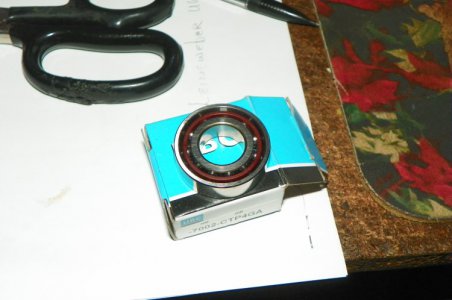M
Mister Ed
Forum Guest
Register Today
Hi all -
I am working on the drawings for some new lathe dials for my Logan. The dials will be 3" direct read, with a settable zero and will incorporate the original cross feed screw. I will also be adding in some thrust bearings to improve turning smoothness and help eliminate (non screw/nut related) backlash slop.
I currently have the plans drawn up using needle bearings, and then started wondering ... "should I be using ball thrust bearings"?
I am working on the drawings for some new lathe dials for my Logan. The dials will be 3" direct read, with a settable zero and will incorporate the original cross feed screw. I will also be adding in some thrust bearings to improve turning smoothness and help eliminate (non screw/nut related) backlash slop.
I currently have the plans drawn up using needle bearings, and then started wondering ... "should I be using ball thrust bearings"?


